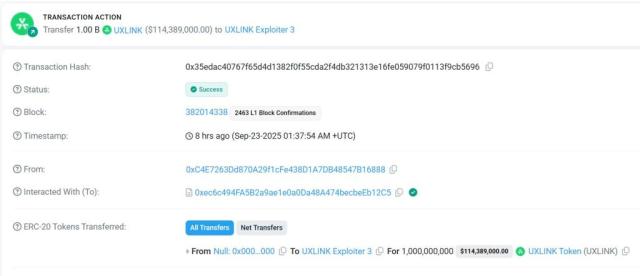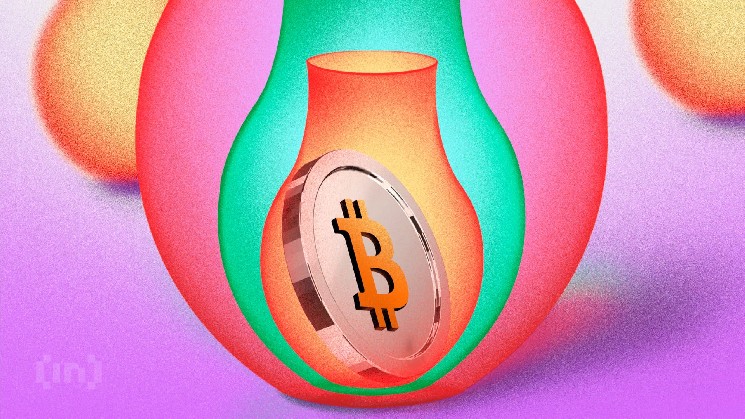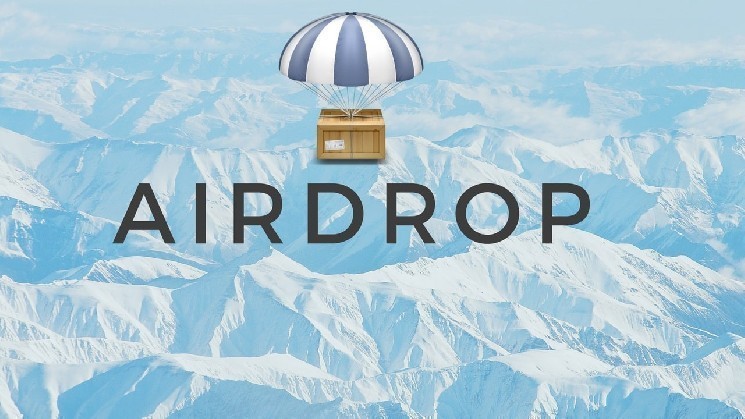By Bernard, ChainCatcher
Stablecoins are becoming the true protagonists of the crypto market in 2025. As of August, USDC's circulation has reached $65.2 billion, and the entire stablecoin market has surpassed the $280 billion mark. Annual transaction volume has reached $27.6 trillion, exceeding the combined total of Visa and Mastercard.
Against this backdrop, an arms race is underway for specialized stablecoin blockchain infrastructure. Unlike general-purpose public blockchains, these emerging "stablecoin public chains" are specifically optimized for stablecoin issuance, payment, and settlement. They prioritize faster, cheaper, and more compliant stablecoin transactions over comprehensive smart contract implementations. From fintech payment leader Stripe to stablecoin giants Tether and Circle, and to innovative projects like Codex, 1Money, and Converge, over ten teams are fiercely competing in this arena.
Arc: Building an “IOS System” for Stablecoins
As the issuer of USDC, Circle officially launched the Arc public chain on August 12, 2025. Unlike other stablecoin public chains, Arc's unique value lies in Circle's dual identity—both as the world's second-largest stablecoin issuer and as an "insider" in the traditional financial world (having completed an IPO and deeply tied to institutions like BlackRock). This identity gives Arc three key advantages:
- A natural advantage of compliance: Circle has collaborated extensively with regulators such as the SEC and FinCEN for many years. Arc isn't just a "patchwork" addition of compliance features to a public blockchain; rather, it incorporates US regulatory compliance from the ground up. Arc is based on a permissioned PoA model, compliant with the EU MiCA and US GENIUS Act frameworks. Furthermore, Arc's account system supports native KYC/AML tagging, allowing institutional users to verify counterparty compliance directly on-chain.
- USDC Native: Arc's use of USDC as a gas token is more than just a matter of convenience. Traditional public blockchains require users to purchase native tokens like ETH or SOL before trading, which increases friction and exchange rate risk. Arc allows businesses to pay all on-chain fees directly with USDC, achieving "what you see is what you get" cost accounting—CFOs see on-chain costs in USD, eliminating the need for complex token conversions. This is of significant significance for public companies and financial institutions with strict financial compliance requirements.
- Performance: Circle acquired the Malachite consensus engine from Informal Systems, which provides Byzantine fault tolerance while enabling dynamic validation node adjustments. This means Arc can switch between "high-safety mode" (20 nodes, 350ms finality) and "high-speed mode" (4 nodes, 100ms finality) depending on network load.
Circle has been making a series of major moves this year. Following its IPO and the official recognition of USDC as a US stablecoin, it launched the Arc public chain, demonstrating Circle's ambition to build a "stablecoin operating system." Just as Apple controls the mobile ecosystem through iOS, Circle aims to control the underlying rules of the stablecoin ecosystem through Arc. Arc's built-in Cross-Chain Transfer Protocol (CCTP) and FX engine are essentially building a global stablecoin clearing network. In the future, regardless of which chain USDC is held, final settlement will be carried out through Arc, transforming Circle from a "stablecoin issuer" to a "global digital dollar clearing center."
Stable: Tether’s Institutional Moat
Stable, Tether's main force, targets the most valuable users in the USDT ecosystem: institutions. Exchanges handle billions of dollars in daily withdrawals, market makers need to quickly allocate funds across platforms, and payment providers need to provide stable settlement services for merchants. These institutional users have fundamentally different needs from retail investors: they prioritize transaction atomicity, privacy, and compliance audits over saving a few cents on fees.
To address this, Stable has designed a unique "Enterprise Channel." This isn't just a simple VIP fast track; it's a comprehensive suite of solutions tailored to the needs of institutions. The batch transaction feature can process thousands of transfers simultaneously, reducing operational costs; the private transaction feature protects commercially sensitive information, meeting corporate confidentiality requirements; and the compliance audit interface automatically generates regulatory reports, streamlining the compliance process. While these features may be insignificant to individual users, they are crucial factors in the migration decision for institutions.
Stable's three-phase development roadmap also reveals Tether's long-term thinking. The first phase will rapidly launch basic functionality, using USDT as a gas token and achieving sub-second block times to seize market opportunities. The second phase will introduce block space guarantees for enterprise payments , support atomic transactions, and ensure the atomicity and finality of large transfers. The third phase will focus on developer tools and ecosystem development, building an ecological moat and ensuring that institutional investments in Stable become sunk costs.
Tempo: The "Rail Revolution" of Payment Giants
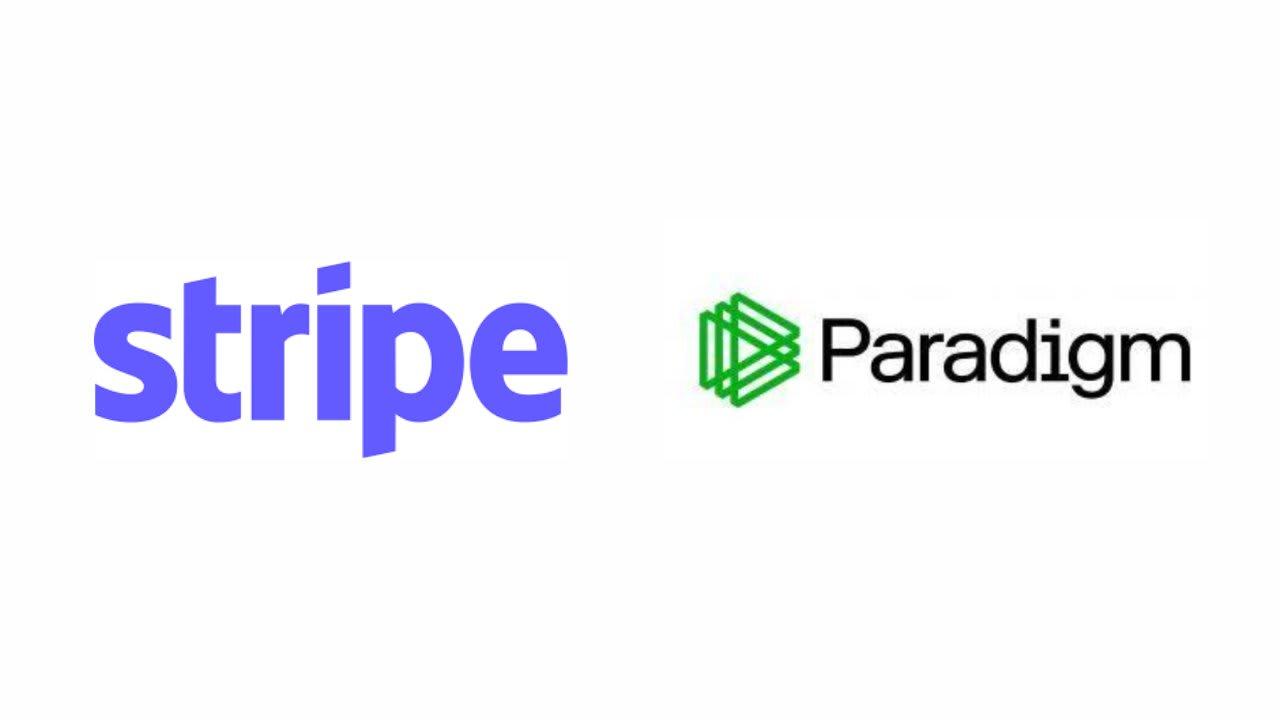
In addition to stablecoin giants Tether and Circle, fintech payment giant Stripe has partnered with Paradigm to launch the Tempo public chain, becoming a disruptor in this competition. Tempo, officially announced on September 4, 2025, boasts a stellar list of partners: Visa, Deutsche Bank, and Standard Chartered in the financial services sector; OpenAI and Anthropic in the technology sector; and e-commerce platforms Shopify, DoorDash, and Coupang. These partners not only participated in the design of the Tempo public chain but will also become the first users of the Tempo ecosystem.
Technically, Tempo's built-in AMM design allows users to pay gas fees with any stablecoin, with the system automatically completing the exchange in the background. This neutrality allows Tempo to avoid being tied to any stablecoin issuer and avoid speculation in the native token.
Last October, Stripe acquired Bridge for $1.1 billion, a move that now appears to pave the way for Tempo. The stablecoin infrastructure provided by Bridge, combined with wallet developer Privy, acquired in June of this year, and Tempo's public blockchain, has enabled Stripe to build a complete, vertically integrated ecosystem—from wallet to payment to settlement. Stripe's vision is to provide merchants with an end-to-end solution, from user payment to merchant collection, all within the Stripe ecosystem, with manageable costs and a consistent experience.
In the past, Stripe charged a 0.3% processing fee on the Visa and Mastercard networks, with most of the profits going to Visa and Mastercard. Now, through Tempo, Stripe aims to become the "payment track" itself and expand its own profit margins.
Plasma: Tether-backed stablecoin chain
Plasma closed a $24 million funding round in February 2025, led by Framework Ventures, with participation from Bitfinex, Tether CEO Paolo Ardoino, and Peter Thiel. Currently, Plasma (XPL) is priced at $0.05, with a target of $50 million and an estimated valuation of $500 million. A total of $74 million has been raised through five rounds of funding. The Token Generation Event (TGE) is scheduled for September 25, 2025, with a listing price of $0.6. Its current market capitalization is approximately $1.36 billion, with a fully diluted valuation (FDV) of $7.6 billion.
Compared to Stable, Plasma, while not a public blockchain project officially managed by Tether, is often considered one of Tether's key stablecoin public blockchain projects due to its strong backing from Tether/Bitfinex-related capital. It targets emerging markets and high-frequency, small-value payment scenarios, emphasizing a frictionless experience to attract retail investors and Web2 migration users.
In an interview, Plasma CEO Paul Faecks revealed a key insight: "The three major stablecoin use cases—savings, consumption, and global transfers—actually have completely different product logics. Savers want USDT to generate returns, consumers prioritize a frictionless payment experience, and cross-border transfer users prioritize compliance and accessibility." Plasma's overall design is based on this insight. Plasma pioneered a dual validator system—one set responsible for network security, the other dedicated to handling zero-gas transfers for USDT. This separation allows Plasma to provide a truly cost-free USDT transfer experience while ensuring security.
Another advantage of Plasma lies in its native support for Bitcoin. Through a customized partnership with Aave, users can borrow USDT directly using BTC as collateral, bypassing centralized wrapped tokens like WBTC. Plasma's partners include DeFi protocols like Ethena, Aave, Morpho, Curve, and Maker. However, Faecks clarified that while Plasma can run any Ethereum-compatible dApp, its goal is to target the "extractive" payments industry through USDT's zero-fee payment rails.
Notably, Plasma explicitly excludes features like NFTs, meme coins, and airdrops, focusing instead on deep integration with traditional payment companies. For example, among Plasma's first partners, Yellow Card covers 20 African countries and has over 1.5 million monthly active users; WalaPay connects remittance networks in labor-exporting countries like the Philippines and Indonesia; and Maple Finance provides on-chain credit services for businesses.
Converge: Bridging DeFi and Traditional Finance
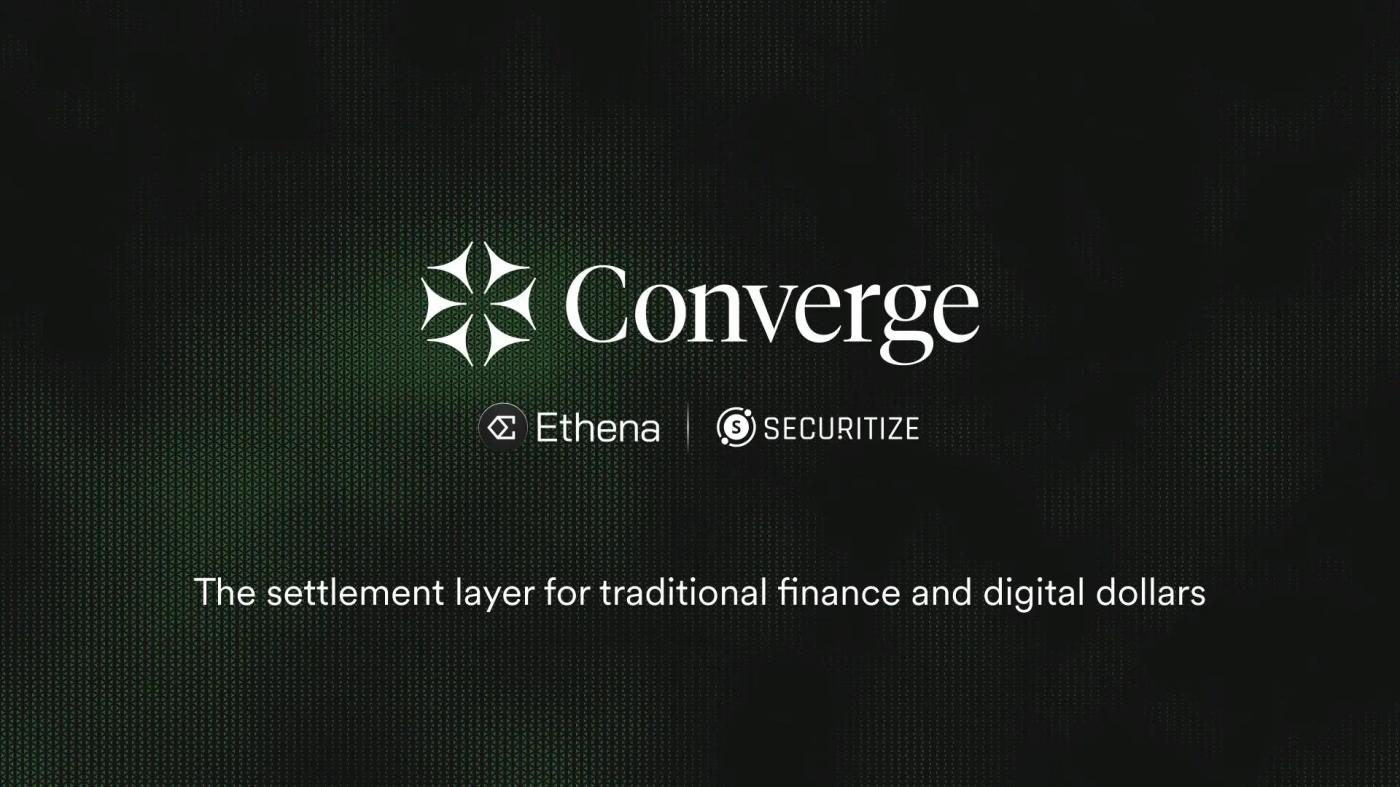
Converge was jointly developed by Ethena Labs and Securitize and was officially announced on March 17, 2025. Compared with other stablecoin public chains, Converge attempts to solve a core problem: how to enable traditional financial institutions to participate in DeFi safely and compliantly?
Converge's greatest innovation lies in its "three-layer parallel" architecture. The first layer is a completely permissionless DeFi layer, allowing anyone to freely use USDe to participate in various DeFi protocols without KYC. The second layer is a permissioned TradFi layer, where institutions can use iUSDe and USDtb for compliant transactions after passing KYC verification. The third layer is Securitize's tokenized asset layer, which includes credit leverage, fixed income products, and equity trading. These three layers operate in parallel on the same chain, sharing liquidity while maintaining independent functionality.
Converge has upgraded ENA to a validator staking token (sENA), creating a closed economic loop: validators stake ENA to earn network security benefits while also sharing in protocol fees. This not only enhances ENA's value capture but also transforms core participants in the Ethena ecosystem into Converge stakeholders.
Converge's deeper strategic intent lies in redefining the "purpose of the chain." Ethena founder Guy Young categorizes blockchains into two categories: speculative settlement and asset storage and settlement. He believes the latter holds far greater opportunities than the former over the next decade. This understanding drives Converge's design to become the settlement layer for global assets. When traditional government bonds, corporate bonds, and stocks can all be tokenized on Converge and participate in DeFi, this blockchain will become the critical infrastructure connecting $100 trillion in traditional assets with crypto innovation.
Codex: Ethereum L2 focused on fiat currency exchange
In April 2025, Codex announced the completion of a $15.8 million seed round of funding, with Dragonfly Capital contributing approximately $14 million, and participation from the venture capital arms of Coinbase and Circle. Codex was co-founded by Haonan Li, a former core member of Optimism; Victor Yaw, a member of the Malaysian Samling Group family; and Momo Ong, a former Meta product manager.
Haonan Li stated in an interview with Fortune Crypto: "In our view, neither TPS nor latency are the true bottlenecks for stablecoin adoption. The real bottlenecks lie at the boundary between fiat and cryptocurrencies." Based on this assessment, Codex chose to build its L2 platform on Optimism, focusing on the fiat-to-cryptocurrency exchange of stablecoins rather than simply improving blockchain performance. Codex's products include the already launched "Swap Avenue," which supports stablecoin transfers between multiple chains, including Solana, Polygon, Ethereum, and Tron, with transaction fees uniformly paid in USDC. Market makers such as Wintermute are already using this service. Codex also plans to launch T+0 instant fiat settlement functionality and support regional stablecoins (such as tokens backed by the French franc and the Swiss shilling).
In terms of market strategy, Codex has focused on the Southeast Asian and African markets. Cross-border payments in these regions are costly and slow, making them natural candidates for stablecoin applications. Codex has launched institutional-grade services in the Philippines and plans to expand to Singapore, the UK, Dubai, and Hong Kong. Codex sees significant opportunities in the African market, particularly. Chainalysis data shows that Sub-Saharan Africa will receive approximately $125 billion in on-chain value between 2023 and 2024. Codex has partnered with Canza Finance in Nigeria and plans to integrate with the custody platform Blockradar. Codex has also set a goal of capturing a quarter of Africa's corporate stablecoin traffic within a year.
Notably, when Stripe and Paradigm announced their Tempo launch in September 2025, Haonan Li tweeted that these new chains were an “attack on Ethereum.” Vitalik retweeted, commenting, “Glad to see Codex join the fray as an L2, clearly considering synergy with Ethereum L1 from day one.”
1Money: A pure payment network without a governance token
1Money was founded by former Binance.US CEO Brian Shroder and announced in January 2025 that it had received more than US$20 million in seed round financing. Investors included more than 20 institutions including F-Prime Capital, Galaxy Ventures, Hack VC, Tribe Capital, etc.
Brian Shroder's core point is that "the reason we're the cheapest is because we don't have our own token. So we don't have to transfer gas fees to support the price of speculative assets... Now we can truly have fixed gas fees." This strategy of not having a native token or a governance token contrasts with Stablecoin—while Stablecoin also doesn't issue a governance token, it still retains USDT as a dedicated gas token, while 1Money allows users to pay fees directly with the stablecoin they're trading.
Another option for 1Money is to not support smart contracts. Shroder argues that settlement times ranging from a few seconds to 30 minutes "wouldn't work for Starbucks," saying, "They won't wait for a transaction to confirm before giving you your coffee." This positioning makes 1Money more of a pure payment network than a general-purpose blockchain platform. Compared to other public chains, 1Money opts for a minimalist approach, completely forgoing the complexities of Web3—no "tokenomics," no complex governance layer, no staking, and no proof-of-work.
1Money has secured 34 US money transmission licenses and a Bermuda BMA Class F license. Its team includes Matthew Shroder (Brian's brother), former Senior Vice President of Global Operations at Binance, as President; Chris Lalan, former Deputy General Counsel at OKX, as Chief Legal Officer; Kristen Hecht, former Deputy Chief Operating Officer at Binance, as Chief Operating Officer; and Brett Enclade, former Chief Operating Officer at Ripple, as Chief Operating Officer.
Many players are competing, but the outcome is not a winner-takes-all situation.
The current competition in the stablecoin public chain is forming multiple factions, but the classification is not a simple "traditional vs. crypto" binary opposition:
- Vertical integration among stablecoin giants: Circle (Arc) and Tether (Stable) directly control the entire chain from issuance to settlement. Their advantage lies in existing liquidity—Tether and Circle already account for 86% of the stablecoin market capitalization. Arc leverages Circle's regulatory advantages to attract institutions, while Stable capitalizes on USDT's dominance in Asia and emerging markets.
- A dimensionality reduction strike from a payment giant: Stripe (Tempo) enters the market with a mature merchant network and payment experience. Stripe processes hundreds of billions of dollars in payments globally, and once Tempo launches, it can immediately integrate into its merchant ecosystem without requiring market education.
- Native innovations offer differentiated breakthroughs: Plasma targets emerging markets and high-frequency, small-value payments, Codex focuses on fiat currency exchange, 1Money focuses on governance-free payment tokens, and Converge connects DeFi and TradFi. These companies lack existing user bases and must identify niche markets overlooked by the giants.
This diversified landscape suggests that the stablecoin public blockchain market is unlikely to see a winner-takes-all situation, with different projects catering to diverse needs. Just as multiple protocols and standards coexisted in the internet era, the future of stablecoin public blockchains will also be characterized by the coexistence and interconnection of multiple chains.
However, a deeper contradiction lies in the positioning dilemma of stablecoin chains. All stablecoin chains compete for the same market, but stablecoins are essentially commodities, not platforms, and are interchangeable. When users can transfer USDT from Arc to Tempo to Solana in seconds, where is the "defense" of these public chains? Do we really need so many stablecoin chains? Ethereum already hosts 57% of the stablecoin supply, with Tron and Solana holding the majority of the remaining share. Furthermore, gas fees on these "old chains" have fallen to low levels. What can new stablecoin chains offer us? And how can we convince users and merchants to migrate?
The competition among public stablecoin chains is ostensibly a battle of technology and business models, but in essence, it's a redistribution of financial power. When Tether generates $13 billion annually with only 150 employees, it's impossible for established money to sit idly by. When 90% of financial institutions claim to be ready to adopt stablecoins, SWIFT's position is already precarious. Circle wants to replace SWIFT with the CCTP protocol, Tether aims to become the Visa and Mastercard of Web3, and Stripe aims to bring its traditional financial advantages to the blockchain, becoming a "platform of platforms." As stablecoin transactions become increasingly simple, fast, and secure, the boundaries between traditional and digital finance will become increasingly blurred. A truly global, instant, and low-cost payment network will become a reality. And we stand at the starting point of this new era.




